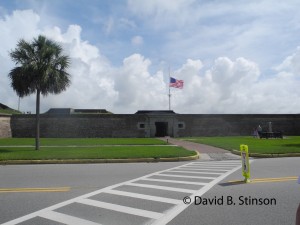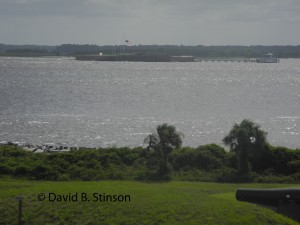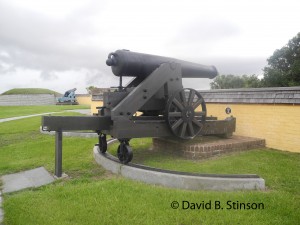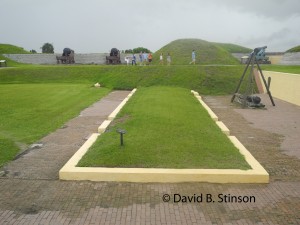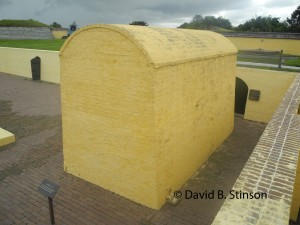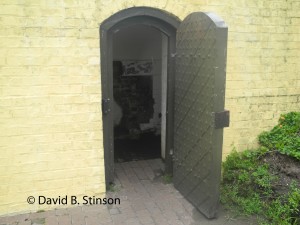Sometimes you find history where you least expect it. Or in the case of Edgar Allan Poe and Fort Moultrie, you find a history different than what you expected.
This summer my family spent a week on Isle of Palms, one of South Carolina’s barrier islands. On one of the many rain filled days, we visited Fort Moultrie, located just a few miles away on Sullivan’s Island, hoping for an afternoon of Civil War history. Headed southwest down Middle Street we passed Poe’s Tavern, it’s sign adorned with a Raven. I thought about stopping for lunch there, but the line was out the door.
Another sign directing visitors to Edgar Allan Poe Library left me wondering why the fascination with the American literary great on such a quaint, out of the way spot at the northern entrance to Charleston Harbor. Having never read Poe’s short story The Gold-Bug, which I was to learn is set in Sullivan’s Island, I was unaware the island had a legitimate claim to Mr. Poe.
The National Park Service now runs Fort Moultrie, its cannons long silenced. As it turns out, for 13 months Mr. Poe was a resident of Fort Moultrie and, by his association with the Army, Sullivan’s Island.
According to the National Park Service Brochure I picked up at the visitors center, Poe enrolled in the University of Virginia in 1826, but dropped out that same year having accumulated some $2,500 in gambling debts. He enlisted in the Army the following year, using the assumed name of Edgar A. Perry. In October 1827 he was assigned to Fort Moultrie.
Fort Moultrie is one of several forts that line the South Carolina shoreline. Fort Sumter sits at the entrance to Charleston Harbor, less than a mile southwest of Fort Moultrie.
During his time in the Army, Poe was assigned to Battery H and attained the rank of Regimental Sergeant-Major.
While at Fort Moultrie, Poe lived in barracks constructed in 1809. All that remains now of the barracks is their long rectangular foundation. The barracks were razed by Confederate soldiers in 1863 out of fear that they might be hit by shells, thus presenting the danger of flying debris.
One building that remains from Poe’s time at Fort Moultrie is the powder magazine.
Also remaining is a traverse built in 1820. The traverse is made of solid brick and protects the powder magazine from enemy projectiles.
A wine cellar, built within the lower inner parade ground in 1809, also remains. During the Civil War, the cellar took a direct hit from Union artillery.
Having learned of Poe’s connection to Sullivan’s Island, I purchased in the visitors center a copy of the Gold-Bug & Other Tales, which I can now say I have read. According to island legend, a tulip tree mentioned by Poe in The Gold-Bug sits only two miles east of Fort Moultrie, at the intersection of Goldbug Avenue and Station 27 Street. On my next visit to Sullivan’s Island I will be sure to take a picture of that tree and hopefully stop for a drink at Poe’s Tavern, assuming I get there early enough.

